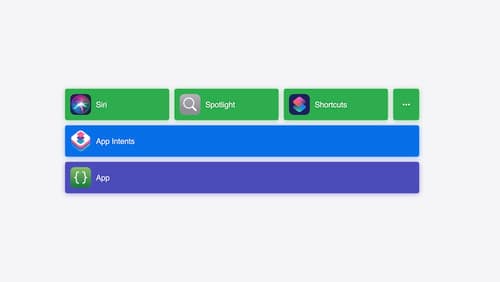How can I write an app
Asked on 2024-07-31
1 search
To write an app, you can follow several steps and utilize various tools and frameworks presented at WWDC. Here are some key points and sessions that can help you get started:
-
Define Your App's Personality and Voice:
- Session: Add personality to your app through UX writing
- Details: This session emphasizes the importance of defining your app's voice and personality. You can start by imagining your app as a person and identifying its unique traits. Exercises in this session help you articulate your app's voice and write a welcome screen that reflects this voice.
-
Utilize App Intents for Core Features:
- Session: Bring your app’s core features to users with App Intents
- Details: Learn how to add features to your app using the App Intents framework. This includes creating shortcuts, widgets, and controls that enhance user interaction.
-
Leverage Swiftassist for Coding:
- Session: Platforms State of the Union
- Details: Swiftassist is a new tool introduced to help with coding tasks. It can assist in writing Swift code, experimenting with new APIs, and prototyping ideas quickly.
-
Explore New Features in SwiftUI:
- Session: What’s new in SwiftUI
- Details: This session covers new features in SwiftUI, including document-based apps, custom document icons, and animation presets for SF Symbols. These features can help you create a more engaging and visually appealing app.
-
Incorporate Writing Tools and Custom Emoji:
- Session: What’s new in AppKit
- Details: Learn about new writing tools, Genmoji, and the Image Playground app. These tools can enhance text input and allow for the creation of custom emoji and images within your app.
-
Optimize Your App for the App Store:
- Session: What’s new in App Store Connect
- Details: This session provides insights on how to get your app discovered, tested, and reach customers effectively. It also highlights the importance of inclusivity and accessibility in your app's values and story.
By following these steps and utilizing the resources from the mentioned sessions, you can effectively write and develop a robust app.

Bring your app’s core features to users with App Intents
Learn the principles of the App Intents framework, like intents, entities, and queries, and how you can harness them to expose your app’s most important functionality right where people need it most. Find out how to build deep integration between your app and the many system features built on top of App Intents, including Siri, controls and widgets, Apple Pencil, Shortcuts, the Action button, and more. Get tips on how to build your App Intents integrations efficiently to create the best experiences in every surface while still sharing code and core functionality.

Platforms State of the Union
Discover the newest advancements on Apple platforms.

What’s new in SwiftUI
Learn how you can use SwiftUI to build great apps for any Apple platform. Explore a fresh new look and feel for tabs and documents on iPadOS. Improve your window management with new windowing APIs, and gain more control over immersive spaces and volumes in your visionOS apps. We’ll also take you through other exciting refinements that help you make expressive charts, customize and layout text, and so much more.
